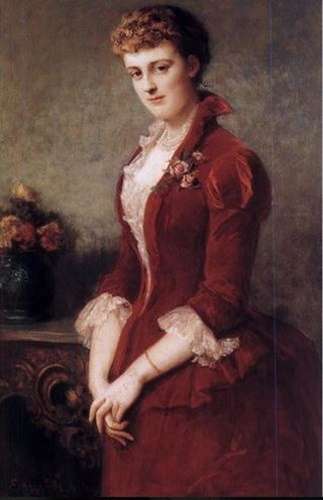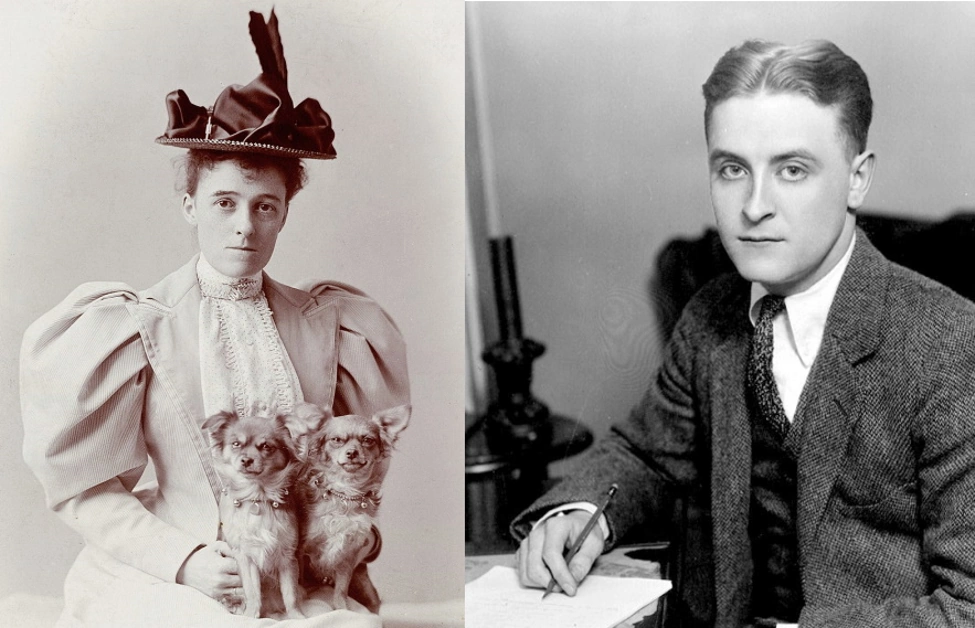Edith Wharton belonged to the old-money, upper-crust New York society to which F. Scott Fitzgerald aspired.
Wharton, like the much younger Fitzgerald, had won acclaim as a novelist. She was also an arbiter of Victorian taste. Her first published work was an interior design book, The Decoration of Houses. In 1902, she designed and landscaped The Mount, her country home in Lenox, Mass. It was her first real home, she said.

Edith Wharton
Edith Wharton
Fitzgerald viewed Edith Wharton with awe and reverence. Scribner’s published both authors, and Fitzgerald claimed he once burst into her publisher’s office and knelt at her feet. His most famous novel, The Great Gatsby, was about a parvenu who died because of his love for a woman who belonged to the same elite class as Edith Wharton.
Wharton’s marriage fell apart and she moved to France in 1920. It was there that she and Fitzgerald spent the disastrous afternoon of July 5, 1925 together.
Fitzgerald was 28 and had just published The Great Gatsby. He sent the 63-year-old Wharton a copy. In return, she invited him and his wife Zelda to tea at her home outside Paris. “To your generation, I must represent the literary equivalent of tufted furniture and gas chandeliers,” she wrote.
Zelda refused to go. She didn’t want Edith Wharton to make her feel provincial. So Fitzgerald invited Teddy Chanler, a mutual friend who would later become a music composer.
Tea Party
Fitzgerald got drunk on the way to Wharton’s house and found the tea party boring. He lunged around the elegantly furnished drawing room, than leaned against the mantel and told a risqué story. It was about an American couple who stayed in a Paris bordello, thinking it was a hotel.

Scott Fitzgerald in 1921
Edith Wharton didn’t think much of the story because it had no plot. She refilled his tea cup and said, “But Mr Fitzgerald, you haven’t told us what they did in the bordello.”
Wharton then recorded her impressions of the afternoon in her diary:
To tea, Teddy Chanler and Scott Fitzgerald, the novelist — awful.
The Mount, a National Historic Landmark, opens to the public from May to December.
Photos: ‘Edith Newbold Jones Wharton in hat with fur muff’ courtesy Beinecke Rare Book & Manuscript Library, Yale University. Licensed under Public domain via Wikimedia Commons. ‘The Mount from the Walled Garden by David Dashiell.’ Licensed under Creative Commons Attribution-Share Alike 3.0 via Wikimedia Commons. ‘F. Scott Fitzgerald, 1921,’ by Gordon Bryant: Shadowland. Licensed under Public domain via Wikimedia Commons. This story was updated in 2023.


5 comments
Just visited “The Mount” this past weekend. If you’re ever anywhere near Lennox, MA, be sure to visit! It’s well worth the trip!
[…] Wuthering Heights there. The landscaping was done by Gerald Murphy, the Mark Cross heir who inspired F. Scott Fitzgerald’s fictional character Dick […]
[…] has a reputation as a club for future leaders. It so epitomized East Coast elitism in 1925 that F. Scott Fitzgerald had two of his main WASPy characters in The Great Gatsby belonging to it. Later, in the television […]
[…] that year, F. Scott Fitzgerald’s debut novel, This Side of Paradise, sold out within four days of publication. It won him […]
[…] let loose in New York’s speakeasies and clubs during the infancy of the New Yorker. Unlike F. Scott Fitzgerald, another writer who documented the Roaring 20s, she lived to old age in rural […]
Comments are closed.